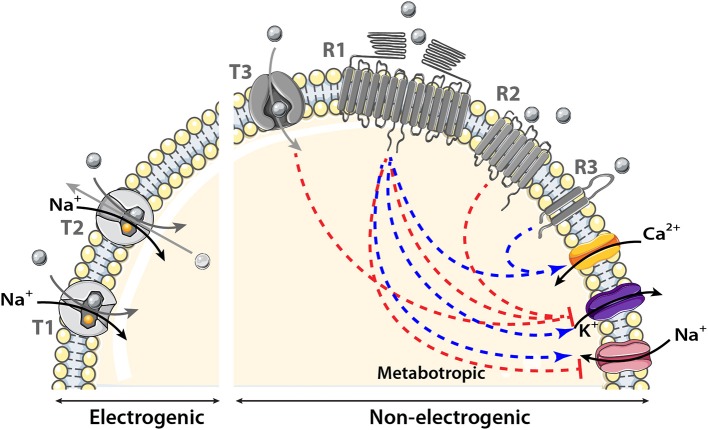Figure 2.
Schematic model showing the transmembrane proteins involved in nutrient sensing. The main transporter (T) family involved in nutrient sensing is the solute carrier (SLC) transporter family. It couples the movement of the nutrient (gray circle) to that of another molecule or ion crossing the membrane either in the same (symporter) named T1 in the figure or opposite direction (antiporter or exchanger) named T2 in the model. Nutrient influx down SLC transporters is called electrogenic when associated with a net inward of ion of Na+ of sufficient magnitude to cause direct membrane depolarization. Transport is non-electrogenic when it activates intracellular cascades that in turn depolarizes the membrane for example via K+ conductance inhibition. The two receptor (R) families involved in nutrient sensing are: the large receptor family of seven transmembrane domains (7TM) named R1 and R2 in the figure and the smaller family of two transmembrane domains (2TM) named R3 in the schematic model. The main receptor family is composed of 7TM it could be observed as heterodimer, homodimer (R1) or monomer (R2). Nutrients binding to their receptors activate an intracellular cascade which induces membrane depolarization by activating (blue arrow) a Na+ influx or by inhibiting (red line) K+ conductance or hyperpolarization by the reverse events. Metabotropic (via intracellular cascades) activation and inhibition of ion channels induced by nutrients are represented by the blue and red dotted lines respectively.

